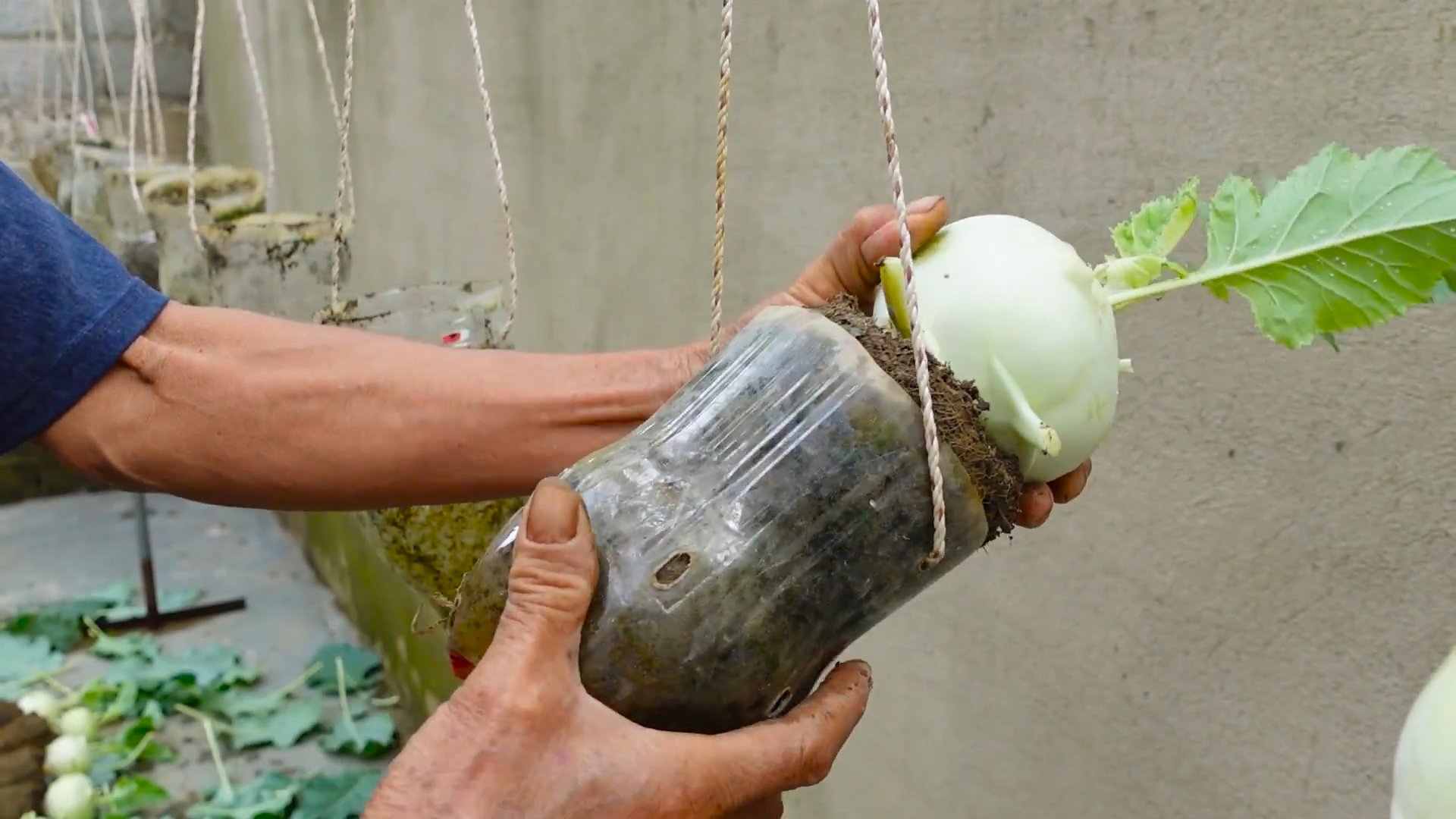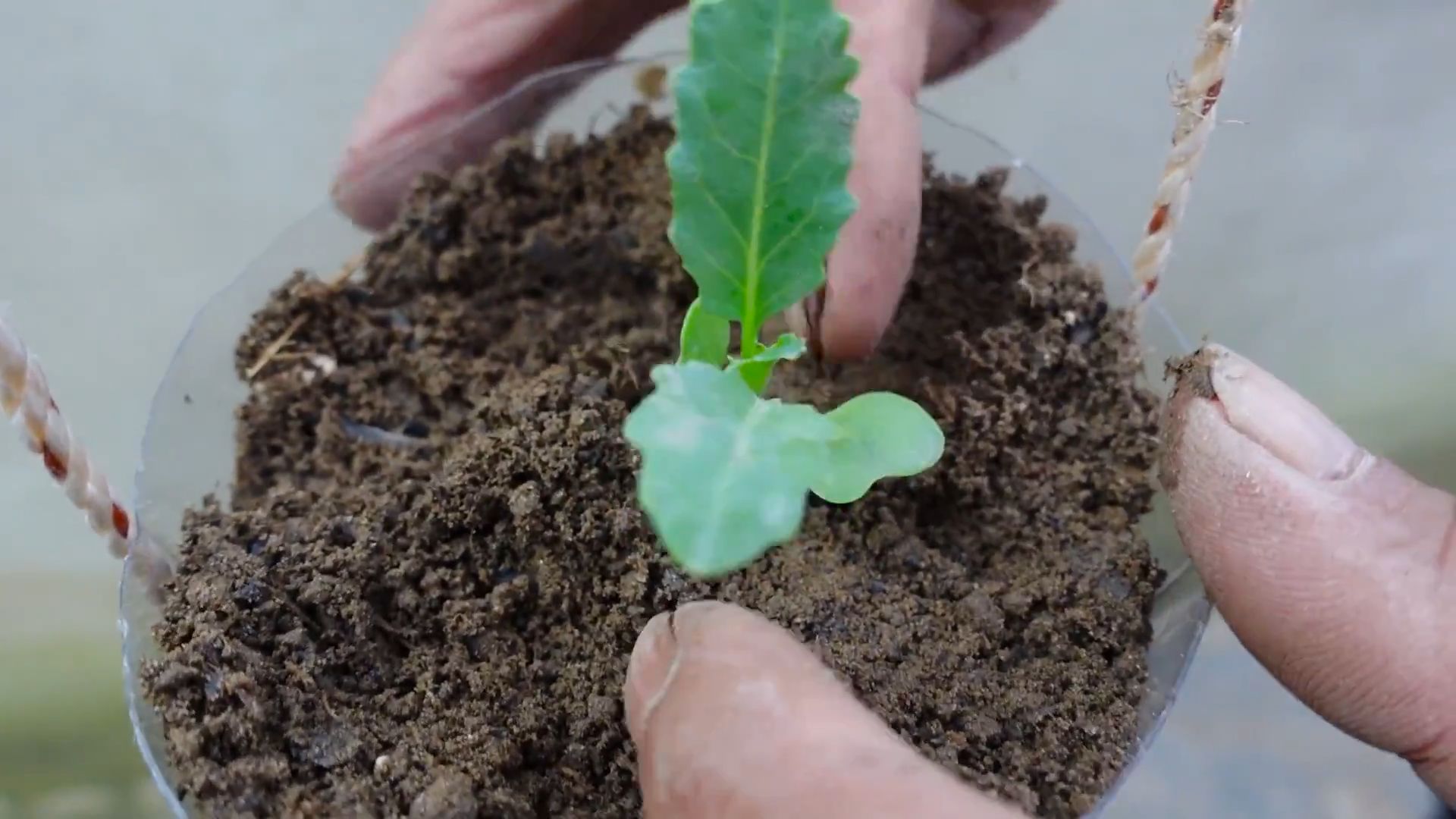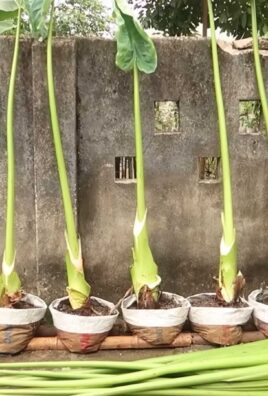Grow Taro at Home: Ever dreamt of having your own little tropical oasis, right in your backyard? I know I have! There’s something incredibly satisfying about nurturing plants and harvesting your own food. And trust me, growing taro is easier than you might think! This DIY guide is your passport to cultivating this fascinating and delicious root vegetable, even if you’re a complete beginner.
Taro, also known as “kalo” in Hawaiian culture, has a rich history spanning thousands of years. It’s been a staple food in many cultures across Asia, Africa, and the Pacific Islands. Imagine, you’re not just growing a plant; you’re connecting with a long line of agricultural tradition! But beyond its historical significance, why should you bother to grow taro at home? Well, for starters, it’s incredibly nutritious, packed with vitamins, minerals, and fiber. Plus, store-bought taro can be expensive and hard to find. With a few simple tricks and a little patience, you can enjoy fresh, homegrown taro whenever you want.
This guide will walk you through everything you need to know, from selecting the right variety to harvesting your very own taro. We’ll cover essential tips and tricks to ensure your taro thrives, even if you don’t have a green thumb. So, grab your gardening gloves, and let’s get started on this exciting journey of growing your own taro!

Growing Taro at Home: A Beginner’s Guide
Hey there, fellow plant enthusiasts! Ever thought about growing your own taro? It might seem a bit exotic, but trust me, it’s totally doable, even if you don’t have a sprawling garden. I’m going to walk you through everything you need to know to cultivate this fascinating plant right in your own home. Get ready to get your hands dirty!
Choosing Your Taro Variety
First things first, let’s talk about varieties. Taro comes in different shapes, sizes, and even colors! Some are better suited for container growing than others. Here are a few popular options:
- Bun Long: This is a common variety, known for its large, heart-shaped leaves and relatively compact size. It’s a great choice for beginners.
- Elephant Ear Taro (Colocasia gigantea): While technically a taro relative, it’s often grouped with taro due to its similar appearance and growing requirements. It’s HUGE, so make sure you have enough space!
- Black Magic Taro (Colocasia esculenta ‘Black Magic’): This variety boasts stunning, almost black foliage, adding a dramatic touch to your indoor garden.
- Illustris Taro (Colocasia esculenta ‘Illustris’): This one has green leaves with prominent black veins, making it a real showstopper.
I personally recommend starting with Bun Long if you’re new to taro. It’s relatively easy to care for and adapts well to container growing.
Gathering Your Supplies
Okay, now that you’ve picked your variety, let’s gather the necessary supplies. You’ll need:
- Taro Corm or Seedling: You can find these at your local nursery or online. Make sure the corm (the underground stem) is firm and healthy-looking.
- Large Container: Taro needs plenty of room to grow, so choose a pot that’s at least 18 inches in diameter and 18 inches deep. Bigger is always better!
- Well-Draining Potting Mix: Taro loves moisture, but it doesn’t like to sit in soggy soil. A mix of potting soil, perlite, and compost works well.
- Water: Taro needs consistent moisture, so have a watering can or hose handy.
- Fertilizer: A balanced liquid fertilizer will help your taro thrive.
- Optional: A saucer to catch excess water, pebbles for drainage.
Planting Your Taro
Alright, let’s get planting! This is the fun part.
- Prepare the Container: If your container doesn’t have drainage holes, add a layer of pebbles to the bottom to improve drainage. This will prevent root rot.
- Fill the Container: Fill the container with your well-draining potting mix, leaving a few inches of space at the top.
- Plant the Corm or Seedling: If you’re planting a corm, dig a hole in the center of the soil that’s about twice the size of the corm. Place the corm in the hole with the pointed end facing up. Cover the corm with soil, leaving the top slightly exposed. If you’re planting a seedling, gently remove it from its nursery pot and plant it in the center of the container at the same depth it was growing in before.
- Water Thoroughly: Water the soil thoroughly until water drains out of the bottom of the container. This will help settle the soil and get the roots off to a good start.
Caring for Your Taro
Now that your taro is planted, it’s time to learn how to care for it. Taro is relatively low-maintenance, but it does have a few specific needs.
Light
Taro loves bright, indirect light. Avoid placing it in direct sunlight, as this can scorch the leaves. An east-facing window is ideal. If you don’t have enough natural light, you can supplement with a grow light.
Water
This is crucial! Taro needs consistently moist soil. Water it deeply whenever the top inch of soil feels dry to the touch. Don’t let the soil dry out completely. You can even place the container in a saucer filled with water to keep the soil consistently moist. Just make sure the container isn’t sitting directly in the water all the time, as this can lead to root rot.
Humidity
Taro thrives in humid environments. If you live in a dry climate, you can increase humidity by misting the leaves regularly, placing a humidifier nearby, or grouping your taro with other plants.
Fertilizer
Feed your taro with a balanced liquid fertilizer every 2-4 weeks during the growing season (spring and summer). Follow the instructions on the fertilizer label.
Temperature
Taro prefers warm temperatures, ideally between 65°F and 85°F (18°C and 29°C). Avoid exposing it to temperatures below 50°F (10°C).
Troubleshooting Common Problems
Even with the best care, you might encounter a few problems along the way. Here are some common issues and how to fix them:
- Yellowing Leaves: This could be a sign of overwatering, underwatering, or nutrient deficiency. Check the soil moisture and adjust your watering accordingly. If the soil is consistently moist, you might be overwatering. If the soil is dry, you need to water more often. If the leaves are yellowing all over, it could be a sign of nutrient deficiency. Try fertilizing with a balanced liquid fertilizer.
- Brown Leaf Tips: This is usually caused by dry air. Increase humidity by misting the leaves regularly or placing a humidifier nearby.
- Pests: Taro can be susceptible to pests like spider mites and aphids. Inspect your plant regularly for signs of infestation. If you find pests, treat them with insecticidal soap or neem oil.
- Root Rot: This is caused by overwatering and poor drainage. Make sure your container has drainage holes and that you’re not overwatering. If you suspect root rot, repot your taro in fresh soil and trim away any rotten roots.
Harvesting Taro (If Applicable)
While you can grow taro for its ornamental foliage, you can also harvest the corms for consumption. However, it’s important to note that raw taro corms contain calcium oxalate crystals, which can cause irritation. Always cook taro thoroughly before eating it.
If you want to harvest the corms, wait until the plant is at least 6-8 months old. Carefully dig up the plant and separate the corms from the roots. Wash the corms thoroughly and cook them before eating.
Propagating Taro
Want more taro plants? You can propagate taro by dividing the corms. When you dig up your taro plant to harvest the corms, you’ll likely find that it has produced several smaller corms. You can separate these corms from the main plant and plant them in their own containers.
- Carefully separate the corms: Gently pull apart the smaller corms from the main plant, making sure each corm has some roots attached.
- Plant the corms: Plant the corms in individual containers filled with well-draining potting mix.
- Water thoroughly: Water the soil thoroughly until water drains out of the bottom of the container.
- Care for the new plants: Care for the new plants as you would a mature taro plant.
Enjoying Your Taro
Growing taro at home can be a rewarding experience. Not only will you have a beautiful and unique plant to admire, but you’ll also have the satisfaction of knowing that you grew it yourself. So, go ahead and give it a try! I’m sure you’ll love it. Remember to always research your specific variety for any unique care requirements. Happy growing!

Conclusion
So, there you have it! Growing taro at home, while it might seem like a tropical dream, is entirely achievable with a little patience and the right approach. This DIY method isn’t just about saving money; it’s about connecting with nature, understanding the life cycle of a plant, and enjoying the unparalleled satisfaction of harvesting something you nurtured from start to finish. Forget the bland, store-bought taro; imagine the vibrant flavor and freshness of taro grown right in your own backyard or even on your balcony!
This method is a must-try because it empowers you to control the growing environment, ensuring your taro is free from harmful pesticides and herbicides. You know exactly what goes into your food, making it a healthier and more sustainable choice. Plus, it’s a fantastic conversation starter! Imagine serving a dish made with taro you grew yourself – your friends and family will be amazed.
But the fun doesn’t stop there! Feel free to experiment with different varieties of taro. Some are better suited for certain climates than others, so do a little research to find the perfect match for your region. You can also play around with different growing mediums. While we’ve outlined a simple soil-based method, hydroponics or aquaponics could be exciting alternatives for the adventurous gardener. Consider adding companion plants like basil or marigolds to deter pests naturally.
Don’t be afraid to get your hands dirty and embrace the learning process. Growing taro at home is a journey, and every step, from planting the initial corm to harvesting the mature plant, is a rewarding experience. The key is to be patient, observant, and adaptable. Taro, like any living thing, will have its own quirks and preferences. Pay attention to its needs, and you’ll be rewarded with a bountiful harvest.
We are confident that with our guide, you can successfully cultivate your own taro patch. We encourage you to take the plunge and embark on this exciting gardening adventure. And most importantly, we want to hear about your experiences! Share your photos, tips, and challenges in the comments below. Let’s create a community of home taro growers and learn from each other. Your insights could be invaluable to someone just starting out. So, grab your gardening gloves, prepare your soil, and get ready to enjoy the delicious and nutritious benefits of homegrown taro! Let’s all become experts at growing taro at home!
Frequently Asked Questions (FAQ)
What is the best time of year to start growing taro?
The ideal time to start growing taro is during the late spring or early summer, after the last frost has passed. Taro thrives in warm temperatures and requires a long growing season of at least 7-9 months. Starting in late spring allows the plant to establish itself during the warmer months and maximize its growth potential before the cooler weather arrives. However, if you live in a tropical or subtropical climate with consistently warm temperatures, you can grow taro year-round.
How much sunlight does taro need?
Taro prefers partial shade, especially during the hottest part of the day. While it needs sunlight to grow, too much direct sunlight can scorch the leaves. Aim for about 4-6 hours of indirect sunlight per day. If you’re growing taro indoors, place it near a window that receives bright, indirect light. If you’re growing it outdoors, choose a location that is shaded during the afternoon. You can also use shade cloth to protect the plants from intense sunlight.
What kind of soil is best for growing taro?
Taro thrives in rich, well-draining soil that is high in organic matter. The ideal soil pH is between 5.5 and 6.5. Before planting, amend the soil with compost, well-rotted manure, or other organic materials to improve its fertility and drainage. Taro also benefits from consistent moisture, so choose a soil that retains water well but doesn’t become waterlogged. A mixture of loam, sand, and compost is often a good choice.
How often should I water my taro plants?
Taro requires consistent moisture, especially during the growing season. Water the plants deeply whenever the top inch of soil feels dry to the touch. Avoid overwatering, as this can lead to root rot. During hot, dry weather, you may need to water more frequently. Mulching around the plants can help retain moisture in the soil. In cooler weather, reduce watering frequency. Taro can also be grown in standing water, mimicking its natural wetland habitat, but this requires careful monitoring to prevent algae growth and maintain water quality.
How long does it take for taro to mature?
Taro typically takes 7-9 months to mature, depending on the variety and growing conditions. You’ll know it’s ready to harvest when the leaves start to turn yellow and die back. The corm (the underground stem that is the edible part of the plant) will also become larger and more developed. To harvest, carefully dig around the plant and lift the corm from the soil. Be gentle to avoid damaging the corm.
What are some common pests and diseases that affect taro?
Some common pests that can affect taro include aphids, spider mites, and taro hornworms. These pests can be controlled with insecticidal soap or neem oil. Taro is also susceptible to certain diseases, such as root rot and leaf blight. Root rot is caused by overwatering and poor drainage, so ensure the soil is well-draining and avoid overwatering. Leaf blight can be prevented by providing good air circulation and avoiding overhead watering. Regularly inspect your plants for signs of pests or diseases and take action promptly to prevent them from spreading.
Can I grow taro in containers?
Yes, you can grow taro in containers, but you’ll need to choose a large container that is at least 18 inches in diameter and depth. Make sure the container has drainage holes to prevent waterlogging. Use a well-draining potting mix that is rich in organic matter. Water the plants regularly and fertilize them every few weeks with a balanced fertilizer. Container-grown taro may not grow as large as taro grown in the ground, but it can still produce a decent harvest.
Is taro poisonous if eaten raw?
Yes, taro contains calcium oxalate crystals, which can cause irritation and burning in the mouth and throat if eaten raw. It is essential to cook taro thoroughly before eating it to break down these crystals. Boiling, steaming, baking, or frying taro are all effective methods of cooking. Once cooked, taro is safe to eat and is a nutritious and delicious food.
How do I store taro after harvesting?
After harvesting, store taro in a cool, dry, and well-ventilated place. You can store unwashed taro corms for several weeks in a root cellar or other cool storage area. Avoid storing taro in the refrigerator, as this can cause it to become mushy. If you wash the taro before storing it, make sure to dry it thoroughly to prevent mold growth. Cooked taro can be stored in the refrigerator for several days.
Can I propagate taro from cuttings?
While taro is typically propagated from corms or cormels (small side shoots that grow from the main corm), it is possible to propagate it from stem cuttings, although this method is less reliable. To propagate from cuttings, take a stem cutting that is about 6-8 inches long and has at least one node (the point where a leaf grows from the stem). Remove the lower leaves and place the cutting in a glass of water. Change the water every few days. After a few weeks, roots should start to develop. Once the roots are a few inches long, you can plant the cutting in a pot filled with well-draining potting mix. Keep the soil moist and provide bright, indirect light.




Leave a Comment